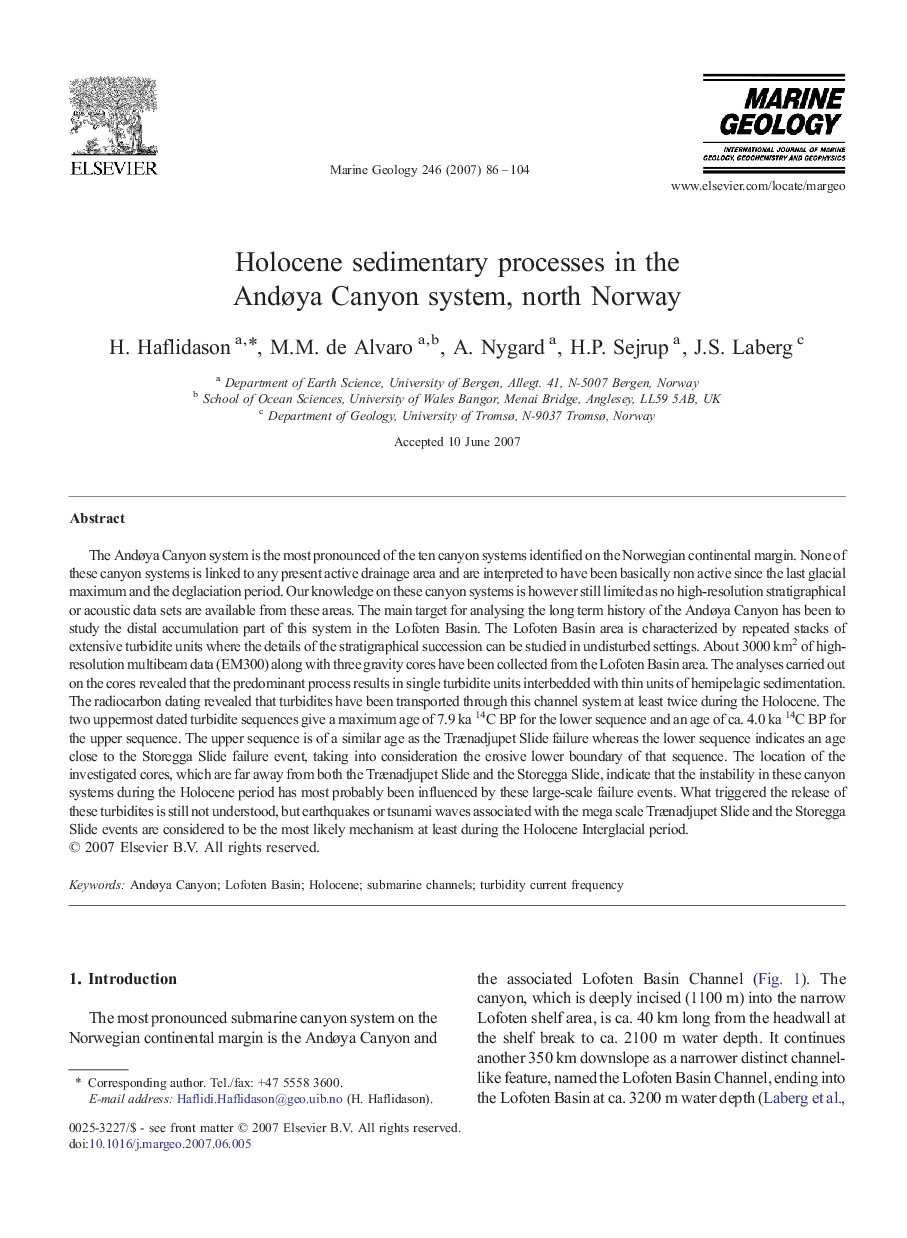| کد مقاله | کد نشریه | سال انتشار | مقاله انگلیسی | نسخه تمام متن |
|---|---|---|---|---|
| 4719483 | 1639189 | 2007 | 19 صفحه PDF | دانلود رایگان |
عنوان انگلیسی مقاله ISI
Holocene sedimentary processes in the Andøya Canyon system, north Norway
دانلود مقاله + سفارش ترجمه
دانلود مقاله ISI انگلیسی
رایگان برای ایرانیان
موضوعات مرتبط
مهندسی و علوم پایه
علوم زمین و سیارات
ژئوشیمی و پترولوژی
پیش نمایش صفحه اول مقاله

چکیده انگلیسی
The Andøya Canyon system is the most pronounced of the ten canyon systems identified on the Norwegian continental margin. None of these canyon systems is linked to any present active drainage area and are interpreted to have been basically non active since the last glacial maximum and the deglaciation period. Our knowledge on these canyon systems is however still limited as no high-resolution stratigraphical or acoustic data sets are available from these areas. The main target for analysing the long term history of the Andøya Canyon has been to study the distal accumulation part of this system in the Lofoten Basin. The Lofoten Basin area is characterized by repeated stacks of extensive turbidite units where the details of the stratigraphical succession can be studied in undisturbed settings. About 3000 km2 of high-resolution multibeam data (EM300) along with three gravity cores have been collected from the Lofoten Basin area. The analyses carried out on the cores revealed that the predominant process results in single turbidite units interbedded with thin units of hemipelagic sedimentation. The radiocarbon dating revealed that turbidites have been transported through this channel system at least twice during the Holocene. The two uppermost dated turbidite sequences give a maximum age of 7.9 ka 14C BP for the lower sequence and an age of ca. 4.0 ka 14C BP for the upper sequence. The upper sequence is of a similar age as the Trænadjupet Slide failure whereas the lower sequence indicates an age close to the Storegga Slide failure event, taking into consideration the erosive lower boundary of that sequence. The location of the investigated cores, which are far away from both the Trænadjupet Slide and the Storegga Slide, indicate that the instability in these canyon systems during the Holocene period has most probably been influenced by these large-scale failure events. What triggered the release of these turbidites is still not understood, but earthquakes or tsunami waves associated with the mega scale Trænadjupet Slide and the Storegga Slide events are considered to be the most likely mechanism at least during the Holocene Interglacial period.
ناشر
Database: Elsevier - ScienceDirect (ساینس دایرکت)
Journal: Marine Geology - Volume 246, Issues 2â4, 7 December 2007, Pages 86-104
Journal: Marine Geology - Volume 246, Issues 2â4, 7 December 2007, Pages 86-104
نویسندگان
H. Haflidason, M.M. de Alvaro, A. Nygard, H.P. Sejrup, J.S. Laberg,